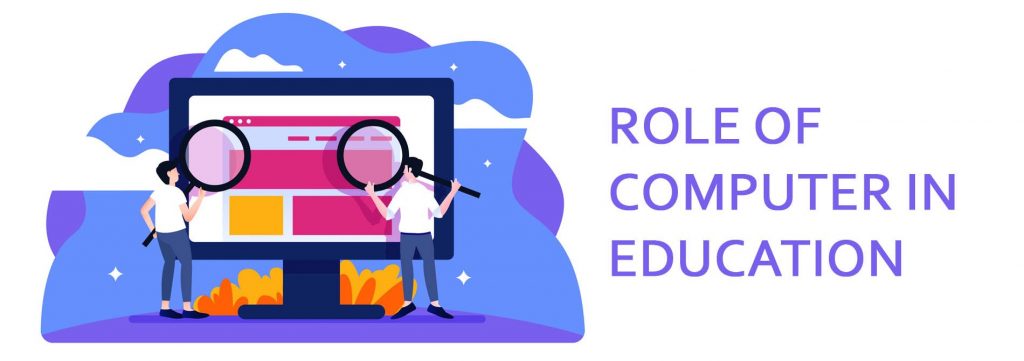
In today’s digital age, computers have become an integral part of our daily lives, transforming various aspects of society, including the field of education. With the rapid advancement of technology, computers are playing an increasingly significant role in reshaping the way we learn, teach, and access educational resources. In this article, we will explore the various roles that computers play in education and the benefits they bring to students and educators alike.
Access to Information:
Computers have revolutionized the way we access information. With just a few clicks, students can explore a vast array of educational resources available online. Online libraries, academic journals, and digital textbooks provide a wealth of knowledge at students’ fingertips. Computers enable students to conduct research, gather data, and access up-to-date information from diverse sources, enhancing their learning experience and promoting independent inquiry.

Interactive Learning:
Computers have introduced interactive and engaging learning experiences. Educational software and online platforms offer multimedia content, simulations, and virtual experiments, allowing students to learn through hands-on experiences. These interactive tools help students grasp complex concepts more easily, retain information effectively, and develop critical thinking and problem-solving skills. Additionally, computer-based learning can be personalized to cater to individual learning styles and paces, ensuring students receive a tailored educational experience.
Collaboration and Communication:
Computers facilitate collaboration and communication among students and educators. Online discussion forums, video conferencing, and collaborative platforms enable students to interact with peers from different locations and cultural backgrounds. They can exchange ideas, work together on projects, and engage in meaningful discussions. Computers also provide avenues for communication between teachers and students outside the classroom, allowing for immediate feedback and support.

Distance Learning:
Computers have opened up new opportunities for distance learning. Through online courses and virtual classrooms, students can pursue education regardless of geographical constraints. This is particularly beneficial for individuals with limited access to educational institutions, those juggling work and studies, or those with physical disabilities. Distance learning through computers provides flexibility, convenience, and a wide range of courses, empowering students to acquire knowledge and skills at their own pace and convenience.
Educational Tools and Software:
Computers offer various educational tools and software that enhance the learning experience. For instance, productivity tools like word processors, spreadsheets, and presentation software enable students to create and organize their work efficiently. Educational software and applications cater to specific subjects, offering interactive tutorials, quizzes, and exercises. Language learning software, math solvers, and coding platforms also provide valuable resources to support learning in specific areas.

Analyzing and Visualizing Data:
Computers enable students to analyze and visualize data effectively. With access to data analysis tools and software, students can interpret complex data sets, create graphs, and draw meaningful conclusions. This skill is essential in subjects such as science, mathematics, and social sciences, where data analysis plays a vital role. Computers provide students with the tools to develop data literacy and cultivate a deeper understanding of their study subjects.
Administrative Efficiency:
Computers streamline administrative tasks for educators, freeing up their time to focus on teaching. Digital grading systems, attendance trackers, and online lesson-planning tools simplify administrative processes and reduce paperwork. Additionally, computers aid in organizing and storing educational materials, allowing educators to access and share resources easily. This organizational efficiency benefits both teachers and students, contributing to a more productive and organized learning environment.
In conclusion, computers have transformed education by revolutionizing access to information, facilitating interactive learning, promoting collaboration and communication, enabling distance learning, providing educational tools and software, analyzing and visualizing data, and enhancing administrative efficiency. As technology continues to evolve, the role of computers in education will only become more significant. Embracing the potential of computers in education can lead to a more engaging, inclusive, and effective learning experience, empowering students to thrive in the digital age.
